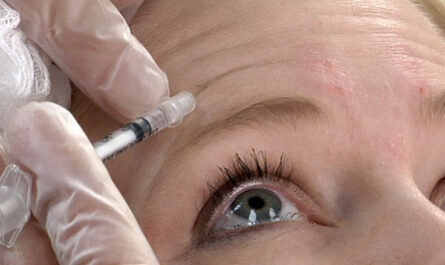
What is Surface Plasmon Resonance?
Surface plasmon resonance (SPR) is an optical phenomenon that occurs when light interacts with conductive metals such as gold or silver. When light hits the interface between a metal and a dielectric medium (such as glass), electrons in the metal film oscillate collectively, generating surface plasmon polaritons. The resonance is highly sensitive to changes that take place within approximately 200nm from the metal surface. This sensitivity makes SPR a very useful tool for detecting molecular interactions that occur at the metal/liquid interface.
How does SPR Work?
In a typical SPR experiment, light from a monochromatic light source, such as a laser, is directed onto a thin film of metal, often gold, deposited on the surface of a glass prism. At a specific incident angle, determined by the properties of the metal film and the surrounding medium, an evanescent wave is generated that penetrates the metal surface. This propagates along the interface before decaying exponentially away from it. Any change in the local refractive index close to the metal film alters the resonance condition. The resonance angle is measured very precisely as a function of time. When a solution containing an analyte is flown over the sensor surface, binding of the analyte to ligands immobilized on the surface causes an increase in local refractive index and a shift in the resonance angle. The resonance shift is monitored in real-time and provides quantitative information about molecular interactions.
Applications of SPR
The high sensitivity and real-time capability of SPR has made it a powerful tool for analyzing biomolecular interactions. Some key applications of SPR include:
Kinetic Analysis of Protein-Protein and Protein-Ligand Interactions
SPR enables direct measurement of association and dissociation rates as well as affinity constants of molecular interactions in real-time. This provides quantitative insights into biomolecular recognition events. Parameters like kon, koff and KD values can be obtained without the need for labelling.
Epitope Mapping and Conformational Change Detection
By immobilizing different fragments of a target protein, SPR can map the epitopes on the protein recognized by antibodies or other ligands. Similarly, conditions that induce conformational changes in proteins can be identified using SPR.
Screening of Drug Candidates
Pharmaceutical companies use SPR to screen large compound libraries to identify potential drug lead candidates that bind drug targets of interest with desired affinity and kinetics. Hit identification and lead optimization in drug discovery relies heavily on SPR.
Detection of Protein Biomarkers
SPR biosensors have been developed for sensitive and specific detection of disease biomarkers in complex clinical/biological samples. This has applications in early disease diagnostics.
Analysis of Receptor-Ligand Interactions
Real-time interactions between cell surface receptors and their ligands, involved in various cellular signaling pathways, can be precisely characterized using SPR. This enhances understanding of biological mechanisms.
Food Safety and Environmental Monitoring
SPR biosensors are useful for detecting toxins, pathogens, allergens and pollutants in food, water and environment. They enable rapid, sensitive and portable testing for quality control and public health purposes.
Advantages of SPR
The key advantages of SPR for biomolecular interaction analysis include:
– Label-free detection – No need to label molecules for detection. Interactions are measured directly in real-time.
– High sensitivity – Minute changes in local refractive index leading to resonance angle shifts in millidegree range can be detected. Femtomolar detection limits possible.
– Real-time kinetics – Association, dissociation and equilibrium binding parameters are obtained without disruption of the interaction.
– Versatility – Wide range of interactions involving proteins, nucleic acids, lipids, small molecules etc. can be studied.
– Rapid analysis – Measurements are done without time-consuming processing steps.
– High-throughput capability – Kinetic and affinity data from hundreds of interactions can be obtained in a day.
– Reproducible – Experiments can be repeated reliably using the same or reusable sensor surfaces.
In summary, surface plasmon resonance is a robust, versatile and powerful label-free technique for studying biomolecular interactions in real-time with high sensitivity and specificity. Its wide applications across diverse fields have significantly enhanced our understanding of molecular recognition events. Continued technological advancements will likely expand the capabilities of SPR biosensors in the future.
*Note:
- Source: Coherent Market Insights, Public sources, Desk research
2. We have leveraged AI tools to mine information and compile it


